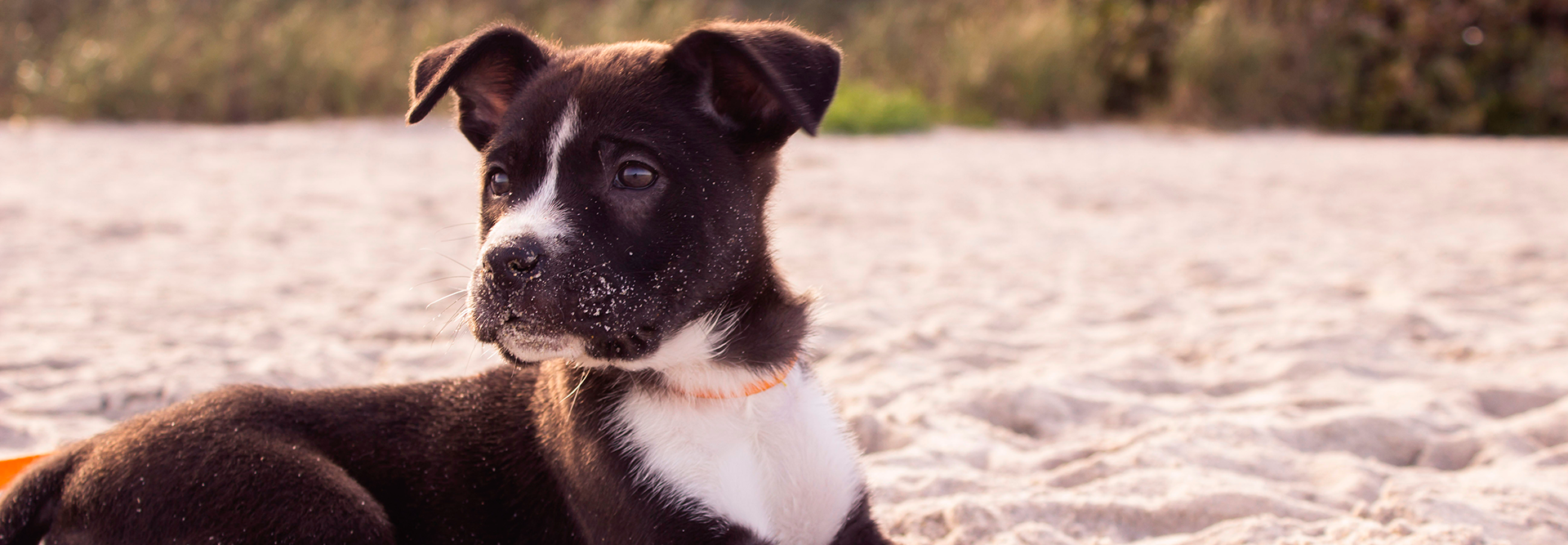
They say you never get a second chance to make a first impression, which couldn’t be more true for animals! This article will cover protocols and best practices for introducing a new puppy to your pets, whether you have dogs, cats, or rabbits. Let’s get started! INTRODUCE YOUR PUPPY TO YOUR DOG(S) Whether you have […]
They say you never get a second chance to make a first impression, which couldn’t be more true for animals!
This article will cover protocols and best practices for introducing a new puppy to your pets, whether you have dogs, cats, or rabbits.
Let’s get started!
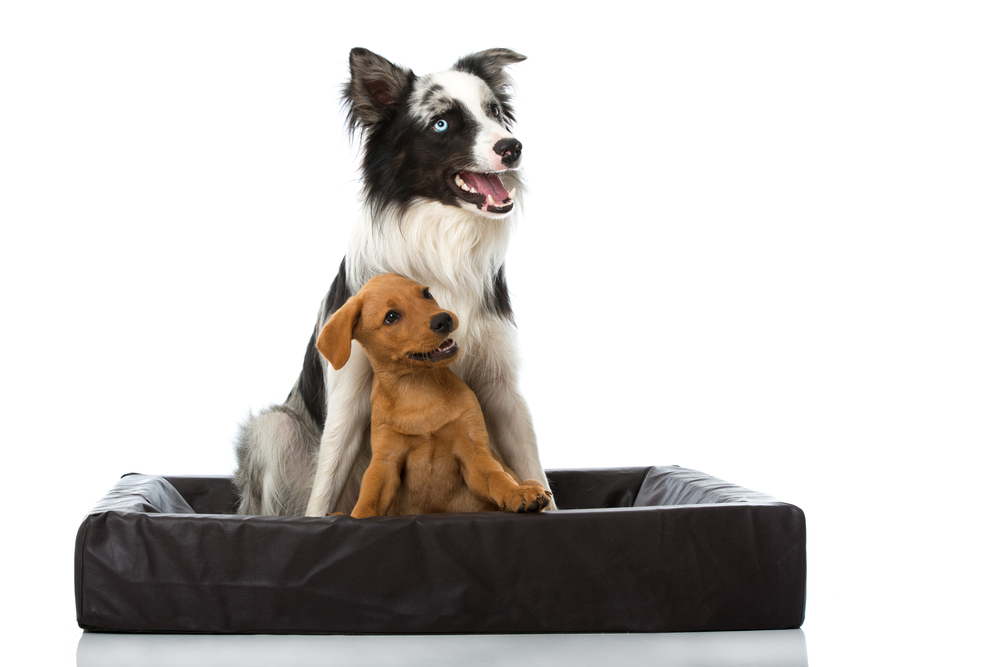
Whether you have one or multiple dogs at home, the process that we lay out for introducing your new puppy can unfold the same. It will require a friend or family member’s help, though, and your current dog or dogs should be well acquainted and comfortable with your friend.
Have your friend take your dog to a local dog park that they’re used to, while you pick your puppy up from the pet store or shelter. You will first bring your puppy home for a bit, not too long, for him to see the home and smell the scents. He will smell your dog’s scent, which will help the next segment of this process.
Your friend at the park will by now have helped your dog to exert a lot of energy and become calm. At which point, you can meet your friend and dog with your new puppy. Keep all the dogs at a safe distance from one another. Remember, leashed dogs feel more vulnerable than off-leash dogs. But ironically, that feeling of vulnerability can cause them to act aggressively.
As the dogs and puppy express interest in meeting one another, you can walk the dogs up to each other. Closely monitor their behavior. If your older dog begins to behave aggressively or growl, don’t take it as a sign they won’t get along. Just have your friend back off so all dogs can have some breathing room.
If the dogs and your puppy appear to be calm, curious, and interested, you can take your dogs off leash and let them play a little. Be prepared to use commands to control your older dogs, though. Your puppy won’t have the wherewithal to comprehend commands at this point, so you may have to scoop him up in your arms if you sense trouble.
Once the park meeting goes well, you can introduce them in your home next.
Orchestrating a peaceful meeting at home can actually be trickier since the house is your older dog’s “territory.” Also, there could be disputes over toys, so it’s a good idea to provide your new puppy with his own toys and be sure that each dog has his toy so that there are no “free for alls.”
Before you get the dogs together in your house, remember that your dogs and puppy will need to establish a hierarchy amongst themselves, and you will not have any say or influence in this process. Your dogs will snap, bark, and herd. None of these are signs of violent aggression. The dogs shouldn’t be scolded or separated if they start snapping and herding. Each dog is trying to assert dominance until a clear Alpha emerges. Let this process unfold.
That being said, you can keep all the dogs on leashes during this process.
If they do fight by latching on, tugging, or physically entangling in an aggressive manner, then pull them all apart, scold them verbally, and give them all a time out in their crates for 5 to 10 minutes. It’s very important that you establish there will be no violence or physical aggression in the household.
As you get to know the dynamic of your dogs as they mix in with your new puppy, you’ll gain experience recognizing if and when one dog tries to pick a “squabble” to start trouble. In that scenario, you can give the instigator a time out, but don’t punish all the dogs and your puppy by crating them.
Repeat the meeting process daily and keep it short, but always keep your puppy with you or in his own room and in his crate the rest of the time. Be patient during this phase when you have to keep your dogs segregated from your puppy. It won’t last forever. You’ll also have to feed your puppy separately, too. And later down the road when you include your puppy in the daily feeding, you’ll have to be extra mindful that no one goes into another one’s food bowl.
Jealousy can be a huge factor when bringing your new puppy home. For this reason, it’s vital that you maintain the current “house rules and traditions.” Meaning, for example, that if your older dog always sleeps at the foot of your bed, then they must be allowed to continue this. Don’t kick your older dog out of the bed to make room for your puppy! Your puppy should be sleeping in his crate anyway until he’s housebroken and obedient.
The more love, kindness, patience, and positive reinforcements you can offer all of your dogs and your puppy throughout this process, the better.
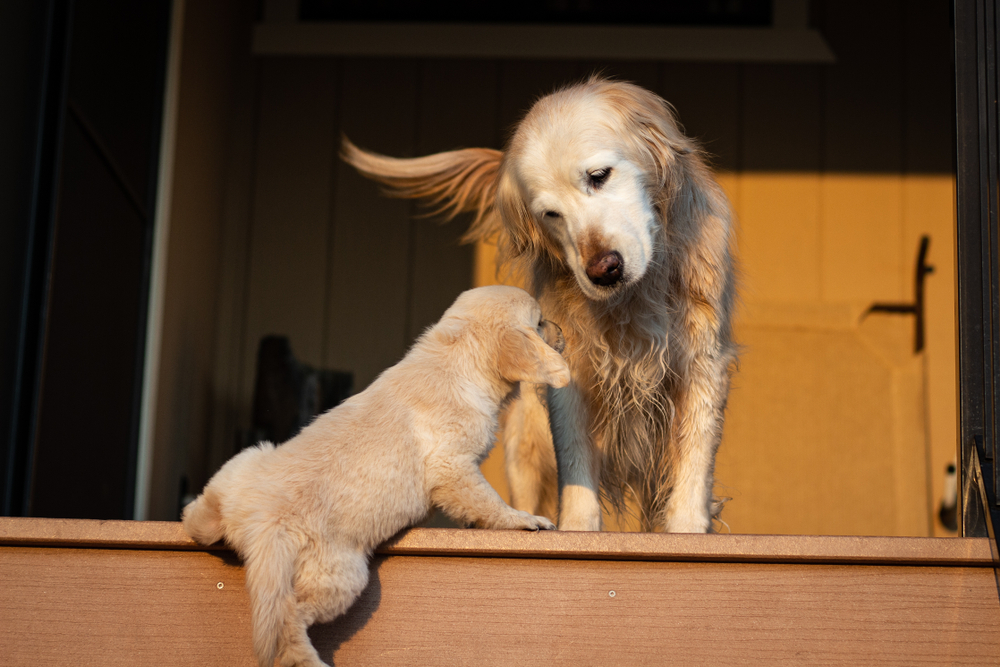
The process for both your dogs to establish their positions in the “pack” and accept each other fully could take up to a month. The key is to be patient if they don’t immediately accept one another and also persistent to maintain the peace if there are any attempted scuffles. Generally speaking, it will be harder for an older dog to accept a new puppy than vice versa. But that doesn’t automatically mean you’ll encounter the same dynamic.
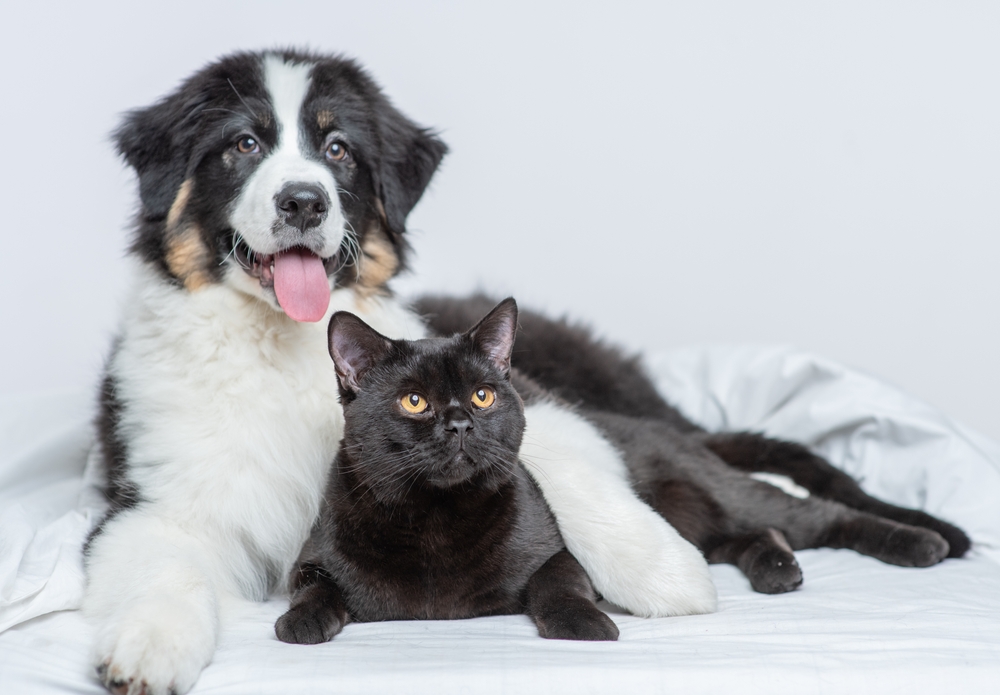
Let us first mention that for pet owners with cats and other pre-existing pets, the breed of the puppy you bring home will play a big role in how well all of the animals get along. Some dog breeds are especially gentle and laid back, like Golden Retrievers, while other breeds tend to be territorial and aggressive, like Jack Russell Terriers. And we would be remiss if we didn’t mention that Greyhounds have a long history of hunting, killing, and eating cats–gulp! Definitely do not bring a Greyhound home to meet Lady Kitty! It will not go well!
Other dog breeds that will not mesh well with your resident cat include:
Let’s hope your brand-new puppy isn’t one of those breeds, and if they are, don’t panic. You can still introduce your puppy to your cat, but the process may take longer and have more bumps. Be prepared for the unexpected and try not to have expectations around when you would like your pets to be acclimated to one another. The timeline won’t be up to you, and could take much longer than you could imagine.
First and foremost, before you bring your new puppy home, we recommend that you prepare some high resting places where your cat can safely tuck himself if meeting the puppy becomes overwhelming. If you don’t have a cat tree or two, now would be a good time to pick them up from your local pet supply store.
You’ll also want to designate one or a few rooms of your home as “cat only.” Place a cat tree in there, too, and make sure your cat understands that this is his or her new special room where they will receive their food and use their litter box. This will help reduce stress in your cat and avoid problems in the future, like your puppy “investigating” the litter box or trying to eat your cat’s food.
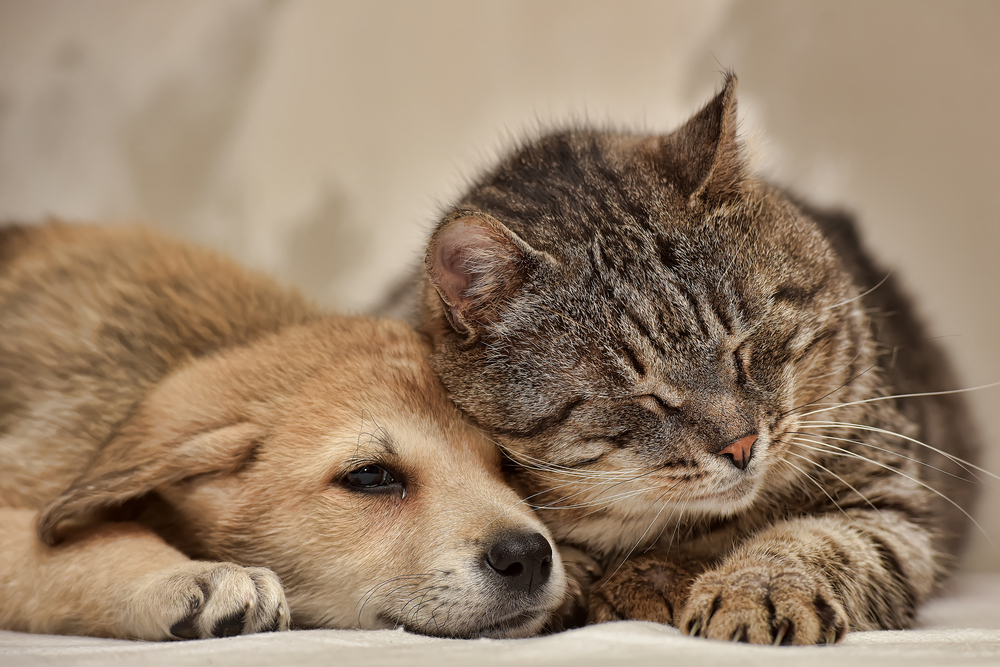
Prior to leaving for the pet store to get your puppy, be sure to secure your cat in their special room with plenty of food, water, and treats, and make certain their litter box is fresh.
When you return home with your puppy, allow your puppy to explore the house for about ten minutes, and then secure him in his own room where you’ve set up his comfy crate. Once your puppy settles down, or even takes a nap, shut him in his room and let your cat out of their special room.
Your cat will be curious to investigate the puppy’s scent and will probably sniff around the door of the dog’s room.
Continue repeating this process for the next few days, giving both your puppy and cat turns to roam the house and smell the other’s closed room door. During this period of time, you can focus on training your puppy with commands and housebreaking him to go to the bathroom outside. Pay particular attention to teaching him commands that you may have to use with him if he gets out of line around your cat, i.e. commands such as “back away,” “down,” “sit,” “stay,” and “drop it!”
It’s ideal to introduce your puppy and cat after you have taken your puppy out for a long walk so that he can discharge a lot of energy. After a walk, your puppy will be at his calmest, which will help the introduction to go smoother and be safer all around.
Pick a neutral room in your home, but make sure that your cat will be able to escape easily. Do not choose a closed room that your cat won’t be able to leave. The room should also have some high elevated places where your cat can jump to if they prefer to eye your puppy from a safe vantage point.
For the first round of introductions, put your puppy’s crate in the neutral room and put your puppy in the crate with some toys and give him a treat. Once he’s secure in the crate, allow your cat to enter the neutral room.
Never force the interaction or push your cat to enter the room if they make it clear they aren’t interested in meeting your puppy at this time.
As your cat enters the room, offer them a lot of positive reinforcement like pats, treats, and soothing words. If your cat sniffs around the dog crate, then great. If they hang back, that’s okay, too. Your cat will set the pace.
If your puppy starts barking or gets overly excited, watch out for signs of distress. You may have to call the introduction short if he can’t control himself. Best case scenario, your puppy will be inquisitive and sniff your cat. The main purpose during this phase is that your dog and cat get used to one another. You don’t have to set the bar higher than that.
The next phase of the process should happen on another day, perhaps the next day, or maybe the animals will need more of a break. This time, instead of keeping your puppy in his crate, put him on a leash in the neutral room and allow your cat to enter the room. Again, offer both your cat and puppy positive reinforcements and reward them for calm behavior. These meetings shouldn’t last too long. The foundational purpose is really to create positive experiences for both your puppy and cat so that they trust each other and you. Don’t push it or try to extend the meeting just because things are going well.
If at any point your puppy gets too excited, simply remove him from the room. This phase of introductions is also a process and could take days. You’ll know that your puppy is ready to be off his leash when he is able to remain consistently calm and obeys your verbal commands easily.
It could take a number of weeks before your puppy’s daily on-leash meetings can be changed to off-leash. The off-leash meetings should be closely supervised, and you should be prepared to intervene if things get out of control. If any dangers arise, your cat will most likely jump up to an elevated position, like onto the cat tree. But you should also be aware that they may instead hiss, swish their tail, or even swat at your puppy. Don’t let it get to that point.
If your cat begins hissing or tail swishing, they are in an aggressive, territorial mood. Pick up your puppy and carry him to a safe location.
This may seem like quite an ordeal that lasts weeks or months, but don’t lose heart. Keep the daily meetings going. Make sure they don’t last longer than 10 minutes at a time. Remember, you’re building positive experiences for both pets that will establish long-term trust. Before you know it, your puppy and cat will be comfortable with one another.
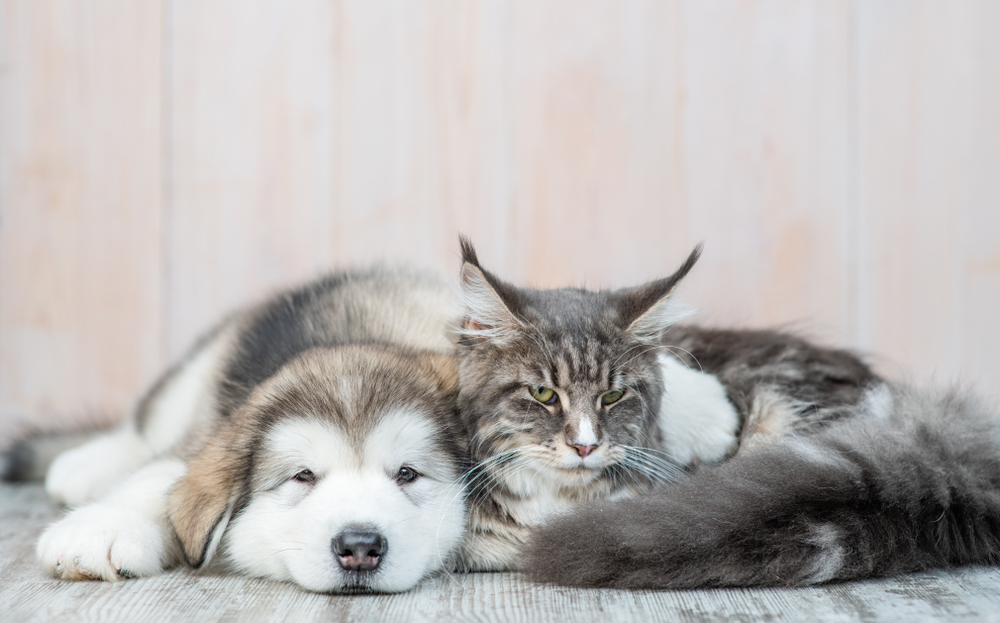
Cats can be temperamental, mischievous, and downright bossy. Your new puppy could bring out a “side” that you’ve never seen in your cat before! And since your puppy is hard-wired to throw his weight around in order to figure out his spot in the pack hierarchy, this could spell trouble and start an unintentional fight. For this reason, it’s best to only allow them to be together while you are supervising them. When eventually you trust both your puppy and cat to get along without incidents in your absence, then and only then should you leave them alone together.
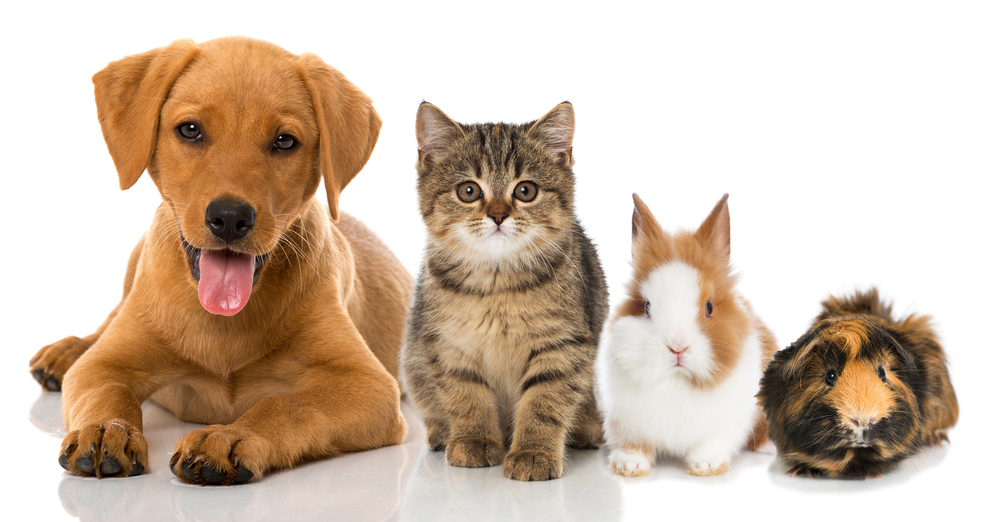
Before you attempt to proceed with the introduction process we lay out below, it’s important to first understand that the dog’s level of obedience is what will “make or break” the possibility of the meeting between the dog and the rabbit going well. Given that you may not have had time to properly train your brand-new puppy yet, it will probably be best if you plan to introduce your puppy to your rabbit once your puppy understands basic commands and will obey you.
For this interim period, you could still conduct a “nice to sniff you” meeting as described below. But definitely do not attempt the full introduction process unless your puppy is obedient and fully understands “leave it!” “back away!” and “drop it!”
As soon as your puppy is home, he will pick up on your rabbit’s scent in the air, and your rabbit will sense there is a new danger present in the house. To subdue the mutual curiosity, we recommend the following informal meeting:
Even if the nice to sniff you meeting goes well and even as your puppy grows and gets trained, he behaves even better around your rabbit, the hard rule moving forward is this:
Never leave your puppy or dog alone with your rabbit, ever. You or someone else must always supervise these meetings and interactions. And be prepared to intervene right away. For more information on introducing your puppy to your rabbit, read this one-page how-to article by the Animal Welfare Association.
We simply cannot overstate enough what we are about to tell you. Dogs are natural predators and rabbits are natural prey. Take a moment to think about that. Dogs and rabbits have a long history already, and it historically involves the dog chasing down whatever “game” its owner just shot and retrieving the animal. Some dog breeds have a greater “predator drive” than others, so depending on your puppy’s breed, it might not even be a good idea to introduce him to your rabbit with the expectation that they’ll ever be “safe” together. The best thing you can do is remove all expectations and accept the possibility that it could be for the best that your puppy and rabbit stay separate without exception.
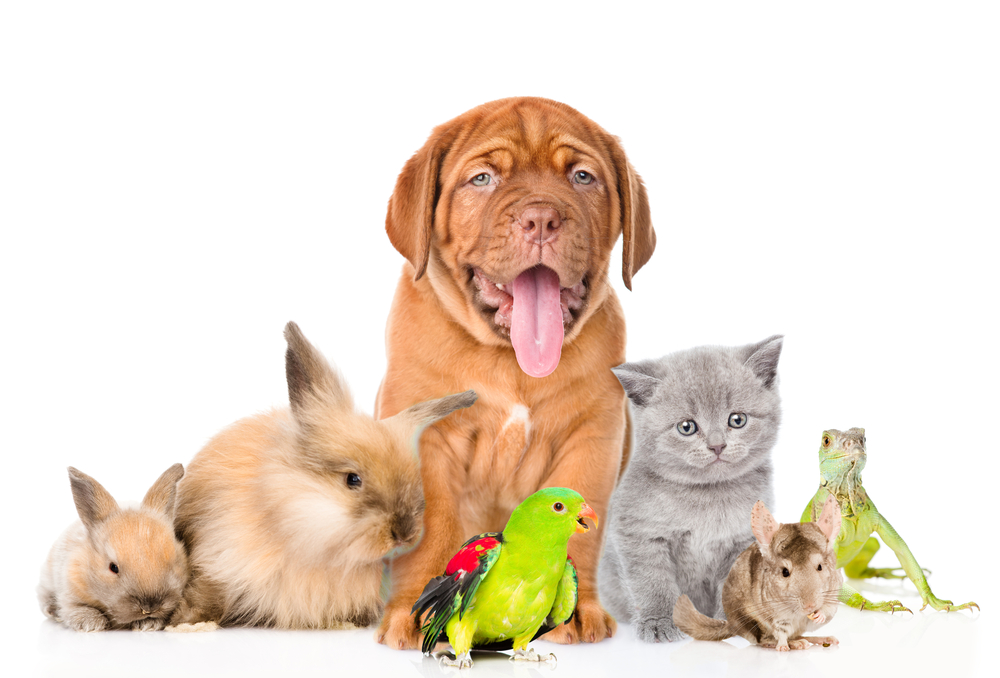
That wraps up our comprehensive how-to guide for introducing a puppy to other pets! We hope you got the advice and direction you need in order to create positive memories for your animals. And we wish you all the success in the world with your pet family!
Are you looking to expand your pet family by adding a brand-new puppy into the fold? Visit one of our Petland Florida locations to find your next furry friend!